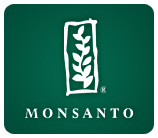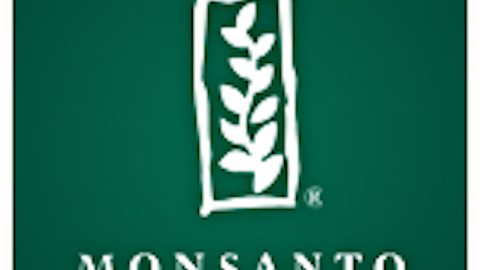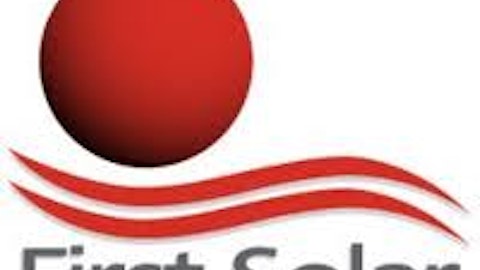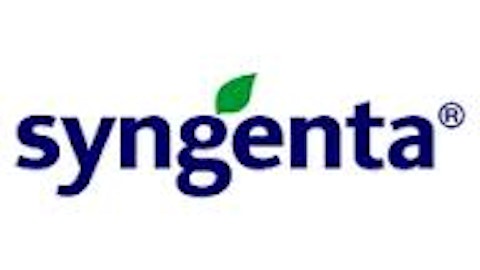World population growth is putting an ever increasing stress on food producers. The situation is aggravated by irregular rain patterns and soil degradation. In order to meet the rising demand, since the 1960’s, farmers have turned to genetically modified seeds, pesticides, and nutrients. Hence, Monsanto Company (NYSE:MON), Intrepid Potash, Inc. (NYSE:IPI), and Syngenta AG (ADR) (NYSE:SYT) serve a meaningful purpose for the society.
Earlier, granddad visited the farm on a daily basis to pull-out weeds by hand. Today, thanks to companies like
Syngenta AG (ADR) (NYSE:SYT), the labor is fairly easy. Nevertheless, lots of R&D and millions of dollars were required. For a company that depends on its R&D to secure revenue, the risks are huge, and so are the rewards if successful.
Take a look at glyphosate’s market introduction and returns. Besides the fact that Syngenta AG (ADR) (NYSE:SYT) trails competitors in the seeds market, the company was able to exploit niches outside genetically modified seeds and introduce innovative crop protection products with relevant market impact, allowing the company to reduce the revenue and market gap with competitors.
Syngenta AG (ADR) (NYSE:SYT) has probably the longest traceable history in the market even though the company was founded in 2000. Hence, its crop protection accumulated know-how is without a doubt the most extensive, reducing Syngenta AG (ADR) (NYSE:SYT)‘s R&D investment risks. For this reason, looking at fundamentals is pointless, because intelligent acquisitions have allowed Syngenta AG (ADR) (NYSE:SYT) to push the technological frontier and reward shareholders in unison. At the same time, Syngenta differentiates itself from direct competitors like Monsanto by diversifying its operations — and risks.
Financially, Syngenta is in a very sound position, even though future estimates are questioned by some analysts. That is, Syngenta is liable to many lawsuits due to environmental and advertising issues. The reader should be wise enough to know that in the agrochemical business, no one is safe from such misfortune. Just like Syngenta takes risks, so do Monsanto Company (NYSE:MON) and Intrepid Potash, Inc. (NYSE:IPI). In the end, what the investor should look at are the prospects and Syngenta has very good ones.
Lastly, planting in the U.S. has been delayed, and so will Syngenta´s revenue this year. This means the investor has more time to make a choice and enjoy positive returns. So, hold is the most responsible recommendation at this point. But, since any investor wants to take advantage of a relative low price that offers good returns in the short and long-term, it is recommended as a buy.
There are two simple reasons for a successful company like Monsanto Company (NYSE:MON) to maintain its leadership: R&D and world population growth. Its new product´s market impact is unquestionable. That impact is aided by world population growth coupled with increasing food demand. Market leadership and growing demand are two catalysts that cannot be ignored when evaluating any company’s prospects.
By the end of the 1990´s, Monsanto Company (NYSE:MON) knew about the potential market effect of roundup-ready soybean and traveled to Argentina in 1998 to test it. Besides testing the new seed on the world´s best farming soil, Monsanto Company (NYSE:MON) looked to shorten R&D evaluations by conducting two tests in one year – given the fact the U.S. and Argentina have different planting seasons.
But, by the end of the second millennium, Henry Wickham’s tale is very-well known and the Argentines took a very good lesson from it: that which has not yet been patented is anyone’s property. In the end, the Argentines kept and exploited the RR soybean with great returns. Surely, in the future, Monsanto Company (NYSE:MON) will pay more attention when testing drought-resistant corn, its new product and the upcoming star of its portfolio.
Population growth has had a great impact on food demand and its corresponding prices. Therefore, the challenge posed to humanity is to increase production quantities in order to match world demand. For the same reason, it is in Monsanto’s mind to present a very well-adjusted balance sheet that allows to keep up an increasing spending on R&D. So, it is no surprise that its fundamentals are all above historic averages. Investors should keep in mind that revenue of Monsanto is seasonal, and even if a quarter does not look all that good, the next will be much better.And, its geographical expansion to Argentina and Brazil, added to its new deal with DuPont Fabros Technology, Inc.(NYSE:DFT) will have a very good impact on revenue in the following years. Lastly, the most important reason to buy for any investor, the stock is relatively cheap at this point of the year.
Intrepid Potash, Inc. (NYSE:IPI) does not compete with Monsanto or Syngenta, directly. The company does not produce genetically modified seeds or crop protection products. In consequence, the firm exploits its business concentration to the fullest by reducing operating costs, a behavior that translates into revenue maximization and is reflected on the company’s fundamentals.
Even though Intrepid Potash, Inc. (NYSE:IPI)‘s financial indicators are below historical averages, they remain above the industry mean; most importantly, the company holds no debt and invests its cash in operational expansions. These are sufficient reasons to invest, but betting on this firm implies certain risks.
The first law for high returns is to invest in risky businesses. So, where does the risk arise in Intrepid Potash, Inc. (NYSE:IPI)? As shown earlier, it is not on the company´s financial balance sheet. Intrepid Potash, Inc. (NYSE:IPI) faces a great level of uncertainty concerning the price of potash itself, given the company´s pure-play characteristics. In short, Intrepid has the opportunity to sink very easily or rise very rapidly due to sudden changes of the price of potash. This characteristic is far from being negative since potash is a crucial crop nutrient. So, there is a big chance that potash will at least maintain its price, allowing Intrepid Potash to continue expanding operations.
Additionally, Intrepid Potash is one of the few langbeinite producers. In consequence, the company holds more power over the pricing of langbeinite than potash. As potash, langbeinite is also a critical nutrient, in this case for fruits. So, it can be induced that Intrepid Potash will depend heavily from the fruit market. As the world’s population continues to grow, so will the demand for the firm´s products. Its unique characteristics as a company and a very low stock price make it a buy.
In all, Monsanto, Syngenta, and Intrepid Potash are good buy options. Also, the companies do not compete directly with each other and complement themselves in the best cases, meaning that the investor will not be betting against himself if he decides to invest in all three. Clear evidence was shown to prove that each company holds an important comparative advantage within a niche of the agricultural business. It is just a matter of preference — seeds, crop protection, or nutrients — as the risks the companies face are the same: political instability, sudden price changes of raw materials, and uncertain R&D results.
Damian Illia has no position in any stocks mentioned. The Motley Fool has no position in any of the stocks mentioned. Damian is a member of The Motley Fool Blog Network — entries represent the personal opinion of the blogger and are not formally edited.
The article Why You Should Invest in the Leaders of the Agriculture Industry originally appeared on Fool.com is written by Damian Illia.
Copyright © 1995 – 2013 The Motley Fool, LLC. All rights reserved. The Motley Fool has a disclosure policy.



